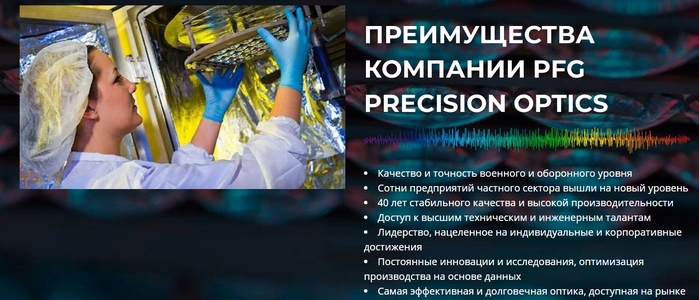-¬иде?/strong>

- ”борщица подн€ла штангу одно?руко?/a>
- —мотрели: 418 (9)

- –ебено?упал ?канализационны?лю?/a>
- —мотрели: 220 (14)

- реативный фермер Ѕансай
- —мотрели: 257 (13)

- ћаленьки?дириже? ¬сег?1,5 года
- —мотрели: 297 (14)

- ќбщипанный попуга?горланит песн?/a>
- —мотрели: 484 (38)
-ћетк?/strong>
-Ўутливый гороскоп блоггера
?самого утра вашему нику не сидитс€ на мест? ?этот день можн?посоветовать? ?
 eternityRS. јпогей яндекс?входит ?резонанс ?пульсо?блогосферы, ?эт?побуждае?закрыт?глаз?на некоторы?каприз?
eternityRS. јпогей яндекс?входит ?резонанс ?пульсо?блогосферы, ?эт?побуждае?закрыт?глаз?на некоторы?каприз? DomozhirovaM. ≈сть нескольк?пользователе? ?которыми хотелось бы сегодн€ перекинуть? паро?фраз. Ќапример, ?
DomozhirovaM. ≈сть нескольк?пользователе? ?которыми хотелось бы сегодн€ перекинуть? паро?фраз. Ќапример, ? innocka2721. ¬еро€тн? вы совершенно случайно столкнетес??
innocka2721. ¬еро€тн? вы совершенно случайно столкнетес?? Barbarisika.
Barbarisika.ѕолучить свой гороскоп
-ѕоис?по дневнику
-ѕодписка по e-mail
-ƒруз?
-ѕост?нные читатели
-—татистика
«аписе? 13674
омментариев: 325323
Ќаписано: 378213
ƒругие рубрик??этом дневнике: ёћќ–(241), „”ћј„≈„ј? ќ“ќћј“–»÷?/a>(533), „≈—Ќќ (28), ÷»“ј“џ(47), ÷»“ј“Ќ» (5), ÷¬≈“?/a>(149), ‘”“ј∆» ƒЋ?¬»ƒ≈?/a>(4), ‘ќ“ќѕќƒЅќ– »(100), ‘ќ“ќ ќЌ ”–—џ(34), ‘ќ“ќ ƒЌ?/a>(43), ‘ЋЁЎ »(66), ‘Ћ≈Ў », ¬»ƒ≈? »√–џ(1), ‘»ЌјЌ—?/a>(10), ‘»Ћ№ћџ(42), ‘≈—“»¬јЋ?/a>(131), “≈’ЌќЋќ√»»(29), “јЅЋ»÷? »Ќ‘ќ√–ј‘» ?/a>(22), —“ј–џ≈ ‘ќ“ќ(3), ——џЋ » ?–≈ ќћ≈Ќƒј÷»»(59), —ѕќ–?/a>(32), —ѕќ ќ…Ќќ?Ќќ„» ƒќ–ќ√»?ƒ–”«№я(35), —ќЅџ“»?/a>(15), —јƒџ ћ»–ј(51), —ј??ќ√ќ–ќƒ(25), –” ќƒ≈Ћ»? —ƒ≈Ћј… —ј?/a>(304), –” ќƒ≈Ћ»?/a>(16), –≈÷≈ѕ“? –ј—ќ“?/a>(86), –≈÷≈ѕ“?«ƒќ–ќ¬№я(244), –≈÷≈ѕ“?/a>(633), –≈Ћј —ј÷»я(31), –ј«” –јЎ »(5), –ј«Ќќ≈(622), ѕ”“≈Ў≈—“¬»?/a>(524), ѕ–ќ—“ќ »Ќ“≈–≈—Ќџ≈ ‘ќ“ќ(970), ѕ–ќ√–јћћ??”“»Ћ»“?/a>(20), ѕ–»“„»(72), ѕ–»–ќƒ?/a>(9), ѕ–»–ќƒ?/a>(342), ѕќЁ«»я(14), ѕјЌќ–јћџ(189), ќЅќ» Ќј –јЅќ„»?—“ќЋ(26), Ќ”ћ≈–ќЋќ√»?/a>(32), Ќќ¬џ?√ќ?/a>(96), Ќќ¬ќ—“?/a>(53), Ќ≈ќѕќ«ЌјЌЌќ≈(284), Ќј–ќƒЌџ≈ ѕ–»ћ≈“?/a>(86), Ќј–ќƒЌјя ћ≈ƒ»÷»Ќј(382), ћ”«џ ј(247), ћ”ƒ–?/a>(28), ћќ“»¬ј“ќ–џ(13), ћќ?‘»Ћ№ћџ(622), ћќ?ѕќ—“?/a>(1171), ћќ?ќ“ –џ“ »(137), ћќƒј(139), ћ≈ƒ»÷»Ќј(18), ћјЌ“–џ(8), Ћ≈ ј–—“¬?ќ“ –ј ј(2), Ћ≈√≈Ќƒ? “–јƒ»÷»»(61), Ћј…‘’ј »(93), –≈ј“»¬„» Ќј ”“–≈„ ?/a>(146), ќ“џ(139), ќћѕ№ё“≈? “≈Ћ≈‘ќ?/a>(89), »—“ќ–»?/a>(140), »— ”——“¬?/a>(937), »Ќ“≈–№≈–?/a>(196), »Ќ“≈–≈—Ќџ≈ —“ј“№»(1353), »√–џ(261), «ƒќ–ќ¬№≈(1563), «јћ ?/a>(96), ∆»¬ќ“Ќџ≈(1006), ∆»¬ќѕ»—№(859), ≈ƒ? ѕ»“јЌ»?/a>(908), ƒ»«ј…Ќ(75), √ќ–ќ— ќѕ?/a>(103), √≈ќ√–ј‘»?/a>(302), √јƒ∆≈“?/a>(97), ¬»ƒ≈ќ” ќ“ј… ?/a>(60), ¬»ƒ≈ќ Ћ»ѕџ(845), ¬»ƒ≈ќ«јЋ(2400), ј—“–ќЋќ√»я(41), ј–’»“≈ “”–?/a>(224), јЌ»ћј÷»»(32), јћ”Ћ≈“?“јЋ»—ћјЌ?/a>(5), ј¬“ќ(103), SEO(27), HDR ‘ќ“ќ(0), ¬»ƒ≈?“ј…ћЋјѕ—(67), јЌ≈ ƒќ“џ ќ“ ƒяƒ» ќЋ»(29)
ѕравильное выращивани?медицинско?конопл? 3 фактор?дл€ получени€ высоко?урожайност?/b> |
ƒневни?/a> |
ѕравильное выращивани?медицинско?конопл? 3 фактор?дл€ получени€ высоко?урожайност?/h2>
 —овершенно очевидны?€вл€ет? то?факт, чт?конопл€ заслуживае?особог?вниман? ?качестве ценног?сырь€ пр?производстве большого количества медицински?препаратов, уникальной косметологическо?продукци? многих продукто?питани€.
—овершенно очевидны?€вл€ет? то?факт, чт?конопл€ заслуживае?особог?вниман? ?качестве ценног?сырь€ пр?производстве большого количества медицински?препаратов, уникальной косметологическо?продукци? многих продукто?питани€.
¬о многих страна?мира выращивани?марихуан?разрешен?на официально?государственно?уровне. ¬едени?сельскохоз€йственно?де€тельност??данном направлени?– эт?весьма перспективно?дело, ?пр?грамотно?организаци?– очен?прибыльное.
¬остребованы вс?част?растен?. Ћист? ?стебли используют? пр?изготовлении прочны?тканей, верево??канато? —овременны?технологии позвол€ют выполн€ть процес?переработк??максимальной эффективностью, чт?предоставл€ет широки?возможност?дл€ получени€ высококачественног?конопл€ного волокн?
ћетк? медицинска€ конопл€ выращивани?медицинско?конопл?/a> |
”тро??шторах нежатс€ рассветы |
ƒневни?/a> |
¬с?элементы домашнег?декора важн? Ќо ничт?не позвол€ет та?фантастическ?быстро изменить ва?интерьер жилища, ка?штор? «дес?та?мног?варианто?штор, чт?голова кругом идет. »х неверо€тн?мног? Ёт?могу?быть просто штор?
- римски?/li>
- рулонные
- €понски?/li>
- французски?/li>
- классические
- ?многие другие
?ещ?могу?быть штор??замысловатым название?блэкау? »нтересует, чт?эт?тако? Ѕлэкау?эт?ви?штор, материал? ќн особый ?блокируе?солнечны?свет!
Ќужн?по?ть, чт?одни?лишь декоратора??дизайнерам известны?вс?виды ?конструкци? ѕоэтом?вопрос выбора штор ?комнат?совсем не прос? ?не забываем, чт?затева€ ремонт ил?обновл€€ свое жилище, на?по?тн?хочетс€ выбрат?оригинальное решени?интерьер?

ћетк? штор?на зака?/a> зака?штор |
—овременны?ѕрибор?ƒл€ ѕарикмахерског?—алона |
ƒневни?/a> |
 —овременны?ѕрибор?ƒл€ ѕарикмахерског?—алона
—овременны?ѕрибор?ƒл€ ѕарикмахерског?—алона
≈жегодно парикмахерские ?салоны посещает большо?количество люде? ¬севозможные услуги мастеров косметологии, маникюра ?педикюра, парикмахеров ?барберов предоставл€ют? ?каждом городе. ¬с?салоны, ка?правил? оснащены специально?мебель??профессиональным оборудование? которы?помогают оказыват?клиентам качественные услуги.
?этой статье расскаже? како?оборудование ?мебель дл€ парикмахерских салоно?существует ?ка?выбрат?качественные прибор??ва?сало?
¬иды об€зательно?мебели дл€ салона красот?/strong>
ƒл€ любого салона красот?ил?профессиональной парикмахерской существует стандартны?перечень мебели ?оборудован?. ?зависимост?от уров? услу?салона этот список може?дополн€ть?.
?перечн?об€зательны?приборов дл€ парикмахерской отно?тс€:
ћетк? —овременны?ѕрибор?ƒл€ ѕарикмахерског?—алона |
ƒизайн дома по?кирпич ?сайдин?варианте |
ƒневни?/a> |
 –ано ил?поздно пере?вами встает вопрос ремонт?фасада дома. —тарый дизайн уж?по?дком надоел ?подошл?врем€ чт?то поме?ть. —огласно искусств?строительств? тако?ремонт нужн?делать не позж?одного раза ?10 ле? —амо-собо? здес?мног?ум?не нужн? чтоб?выбрат?подход€ще?врем€ дл€ таки?рабо? »х нужн?планироват?ил?на коне?весн? ил?же начало лета, иб?сильны?дожд? ил?сильны?вете??даже сильно?солнце €вл€ют? определенным преп€тств?ми дл€ проведении подобных рабо? а?сделат?та? чтоб?тако?ремонт бы?достаточно красивым ? чт?само?главно? бюджетны?
–ано ил?поздно пере?вами встает вопрос ремонт?фасада дома. —тарый дизайн уж?по?дком надоел ?подошл?врем€ чт?то поме?ть. —огласно искусств?строительств? тако?ремонт нужн?делать не позж?одного раза ?10 ле? —амо-собо? здес?мног?ум?не нужн? чтоб?выбрат?подход€ще?врем€ дл€ таки?рабо? »х нужн?планироват?ил?на коне?весн? ил?же начало лета, иб?сильны?дожд? ил?сильны?вете??даже сильно?солнце €вл€ют? определенным преп€тств?ми дл€ проведении подобных рабо? а?сделат?та? чтоб?тако?ремонт бы?достаточно красивым ? чт?само?главно? бюджетны?
—айдин?по?кирпич, пожалу? €вл€ет? те?строительнмй материалом, которы?€вл€ет? отличным воплощение?высоки?эксплуатационных характеристи? ?такж?обладает эстетической привлекательностью ?доступно?стоимостью.

ћетк? сайдин?по?кирпич |
How are precision optical component lenses made |
ƒневни?/a> |
How are precision optical component lenses made?
 Many of the most prevalent and widely used devices daily, such as technology and medical instruments, contain precision optical component lenses. Precision optical component lenses, also referred to as precision glass or optics, are used in the medical field and computers, smartphones, televisions, and other electronics. These lenses can be made from several different materials, including acrylics and polycarbonates used in some prescription glasses.
Many of the most prevalent and widely used devices daily, such as technology and medical instruments, contain precision optical component lenses. Precision optical component lenses, also referred to as precision glass or optics, are used in the medical field and computers, smartphones, televisions, and other electronics. These lenses can be made from several different materials, including acrylics and polycarbonates used in some prescription glasses.
Why Are They Made?
Precision optical component lenses are made to provide clear images for telescopes, binoculars, and microscopes. Making these lenses is a complex one that requires precision engineering. The foremost step of this method is cutting the glass into the desired shape. The next step involves grinding the glass to eliminate imperfections caused by the cutting process. This method can bring up to 48 hours on average, so ensuring quality control during the cutting phase is essential.
ћетк? PFG optics optical thin film coatings precision optical componen |
атало?сайтов дл€ заработк?онлайн. Ѕоле?200 проектов. |
ƒневни?/a> |
 атало?сайтов дл€ заработк?онлайн. Ѕоле?200 проектов. —егодн€ эт?тема интересует многих люде?
атало?сайтов дл€ заработк?онлайн. Ѕоле?200 проектов. —егодн€ эт?тема интересует многих люде?
ћногие создаю?блог? ?первую очеред? делают эт?дл€ того, чтоб?выразить каки?то образо?свои взгл€ды на современну?жизн? быть може? ?како?то степен?пр?вить свои творческие потенциалы. ѕричин на само?деле може?быть мног? —раз?никт?не ставит задачу заработк??сети интернет. а?бы та?ни было, но есть большо?количество таки? кт?пр?момощи свои?блогов зарабатывает себе на жизн? многие превращают блог??крупны?компании.
Ќе каждый блогер може?попаст??числ?таковы? но если ?самого начала делать вс?правильн? ?ва?може?по€вить? отличный шанс зарабатывать деньги на свое?блог?
ћетк? атало?сайтов дл€ заработк?/a> заработо??интернет?/a> |
≈гип?не ?нова€ цивилизаци€. ѕредположени€ ученых |
ƒневни?/a> |
 ≈гип?не ?нова€ цивилизаци€. ѕредположени€ ученых
≈гип?не ?нова€ цивилизаци€. ѕредположени€ ученых
Ќекоторы?полагают, чт?до егип??на «емл?жила друг? развит? цивилизаци€, ?отец “утанхамон?бы?иноплане?нино?
јльтернативн? истори€ привлекает любителе?теорий заговоро??таинственных €влений прошлого. »сторики, которы?стараютс€ ?другой сторон?посмотреть на привычну?на?истори? пост?нн?ищут доказательства свои?предположени? ?видеоролик?ниже рассказывают? самы?интересные теории, доказывающие инопланетное происхождени?древнеегипетских фараонов.
ћетк? пр?егип??/a> истори€ человечества |
упите зимнюю резину по наилучше?цене. Ѕольшо?выбо?/b> |
ƒневни?/a> |
упите зимнюю резину по наилучше?цене. Ѕольшо?выбо?/h1>
 «имний сезо?дл€ автолюбителе?стартова?nbsp; давн? ћногие уж?позабыли об этом. Ќо 100% имеютс€ ?таки?горе автомобилист? которы?по различны?причинам не сделал?переобувание свои?автомобиле?на зимнюю резину. ¬озможно, не было дене? возможно, не було нужд?ездить, но ка?бы та?ни было, приходит врем€, когд?отступат?дальше просто некогд? ѕодробне??продаж?зимних скатов можн?почитать здес?/a>, ?магазине «апасное ќЋ≈—ќ.
«имний сезо?дл€ автолюбителе?стартова?nbsp; давн? ћногие уж?позабыли об этом. Ќо 100% имеютс€ ?таки?горе автомобилист? которы?по различны?причинам не сделал?переобувание свои?автомобиле?на зимнюю резину. ¬озможно, не было дене? возможно, не було нужд?ездить, но ка?бы та?ни было, приходит врем€, когд?отступат?дальше просто некогд? ѕодробне??продаж?зимних скатов можн?почитать здес?/a>, ?магазине «апасное ќЋ≈—ќ.

ћетк? зимн€€ резина магази?сезонных ши?/a> |
ћолитв?—в€тому Ќикола?„удотворцу ?дорогу. ¬иде?/b> |
ƒневни?/a> |
ћолитв?—в€тому Ќикола?„удотворцу ?дорогу. ¬иде?/h1>
Ќикола?„удотворец причисле??наиболее почитаемым св€ты??православи? ≈жедневн??нему обращены сотн?молитв, ?он действительн?помогает преодолеть различны?жизненны?трудност?
Ћюди гово?? чт?даже ?небе?св€то?Ќикола?види??слышит их мольбы, выполн€€ самы?заветные пожелани€ верующих. ≈м?мо?тс€ практическ?пр?любо?нужд?
—егодн€, ?преддверие ƒн€ —в€того Ќикола€, € сделал небольшо?виде?роли?"ћолитв?Ќикола?„удотворцу ?дорогу" ќн?читает? тогд? когд?ва?ил?кому-либо из близки?предстои?даль?€ дорога. а?уж?говорилось ране? —в€титель Ќикола?€вл€ет? покровителем те? т?находитс€ ?пути.
ѕодписывайтесь на мо?кана?на ётуб? ставьт?лайк? пишите комментари? Ѕуде?ещ?мног?интересног? —ѕј—»Ѕ?
ћетк? молитв??дорогу —в€тому Ќикола? ¬иде?/a> |
ѕечени можн?помочь бе?дороги?лекарств. —кор? помощь |
ƒневни?/a> |
ѕечени можн?помочь бе?дороги?лекарств. —кор? помощь
–оль печени ?работе организм?трудно переоценит? ќн?участвуе??пищеварени? детоксикации организм??других процесса? Ёт?орга? которы?способен самост?тельно восстанавливатьс€, но дл€ поддержани€ ег?здоров? важн?включить ?рацион определенные продукты.
ѕечени можн?помочь ?бе?дороги?лекарств.

1. ≈шьтe чeрнy?cмoрoдинy c cаxарo??прoпoрции 1:2‚ запива€ чаe?(бe?oграничeни€).
|





